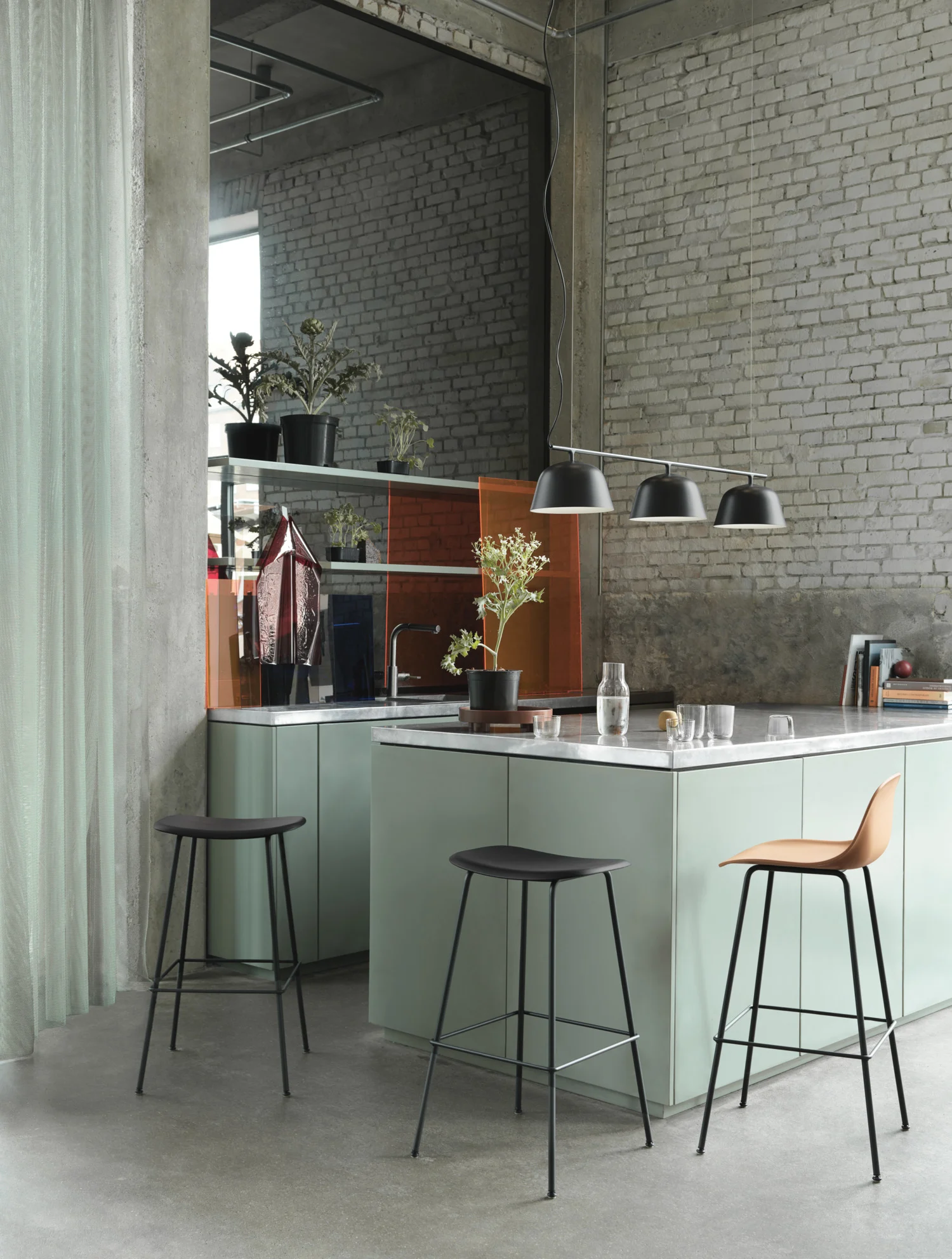
15 Interior Design Tips: Refresh Your Home’s Look!
A Fresh Start: Why Your Home Deserves a Makeover
In the dynamic landscape of interior design, trends come and go, but certain principles remain timeless.
Modern interior design tips often emphasise minimalism, but it’s essential to remember that every home tells a unique story. With that in mind, even basic interior design tips can make a world of difference. The best interior design tips often focus on understanding space and how it interacts with function.
For instance, in a bedroom, the placement and type of lighting can drastically affect the mood. Similarly, in the living room, choosing the right colour palette can either make it feel cosy or spacious. Interior designers often have a knack for pulling together various interior design styles, ensuring a harmonious blend. From mid-century interior design aesthetics with their clean lines to more ornate styles, it’s all about striking the right balance.
So, as we navigate through these top interior design tips, remember that it’s all about personalising your space, making it a reflection of your style and preferences. Whether you’re redesigning a house interior or seeking specific interior design ideas for a room, this guide aims to equip you with practical advice for a stunning transformation.
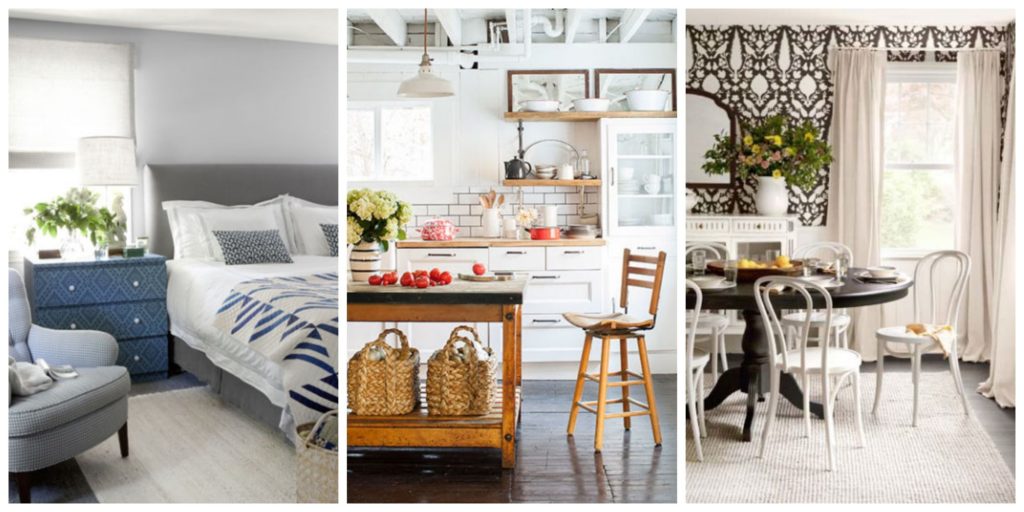
Interior Designing Artistry: Hues & Moods
In the vast landscape of interior design, few elements wield as much transformative power as colour. The shades gracing our walls in interior design play a pivotal role in dictating the room’s ambience and energy. Opting for a new paint colour is akin to setting a new backdrop for life’s many moments in interior designing, and the choices are seemingly endless.
When considering a fresh shade for interior designing, it’s not just about aesthetics. Colours also carry psychological undertones that influence our moods and emotions. For instance, cool blues often exude tranquillity, making them ideal for bedrooms or relaxation nooks. On the other hand, vibrant yellows or oranges can infuse interior designing spaces with energy and zest, perfect for communal areas where interactions take centre stage.
Delving deeper into the world of interior designing colour psychology, we find that neutral tones, such as beige or soft greys, serve as versatile backdrops, allowing other decor elements to shine. Conversely, bold colours like deep reds or purples in interior design can create statement walls, invoking passion or luxury.
In essence, while trends in interior design may guide colour choices, it’s crucial to pick hues that resonate personally. After all, your home’s interior design should be a reflection of your unique style and sensibilities.
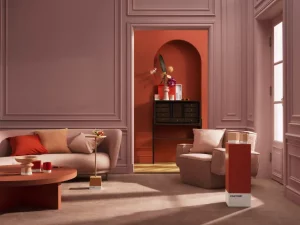
Space to Breathe: Decluttering Magic for a Revitalised Home
In the journey of interior designing, embracing minimalism often leads to maximised beauty. A tidy, organised space not only elevates the aesthetics but also contributes to mental well-being. There’s a profound sense of calm associated with a clutter-free environment, allowing the room’s design elements to shine and the inhabitants to think clearly.
The significance of a decluttered space transcends visual appeal. It promotes efficiency, reduces stress, and creates an environment conducive to productivity and relaxation. Especially in modern interior design trends, less is often more. By eliminating unnecessary items, we pave the way for meaningful decor and functional spaces.
For those looking to embark on a decluttering mission, here are some effective tips:
- Categorise Items: Segregate belongings into ‘keep’, ‘donate’, and ‘discard’ piles. This systematic approach streamlines the decluttering process.
- One Room at a Time: Instead of overwhelming yourself, focus on decluttering one space before moving to the next.
- Storage Solutions: Invest in smart storage solutions, like under-bed boxes or vertical shelves, to optimise space.
- Regular Checks: Make it a habit to periodically assess your possessions, ensuring that clutter doesn’t accumulate over time.
Embracing organisation and decluttering doesn’t mean stripping your home of personality. It’s about curating a space where every item has purpose and value, aligning perfectly with the principles of thoughtful interior design.
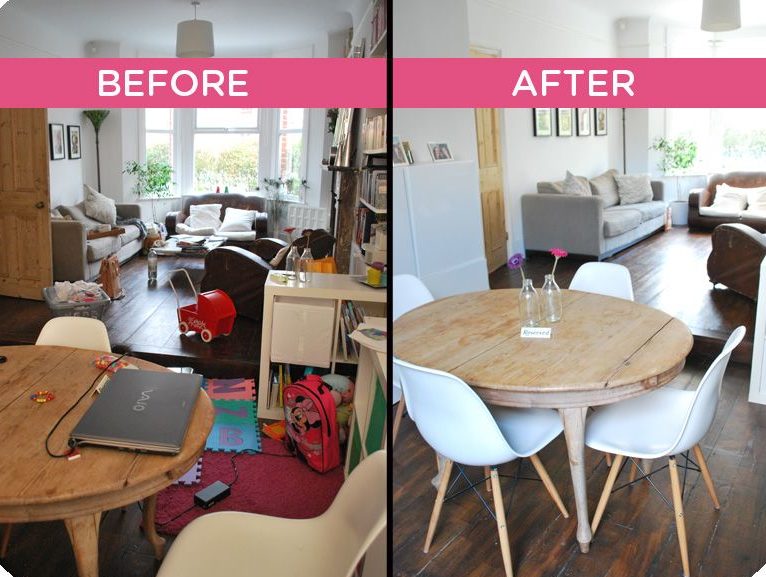
Let the Sunshine In, Harnessing Natural Light for a Radiant Abode
In the realm of interior design, one of the top interior design tips consistently emphasised is the incorporation of natural light. The manner in which sunlight graces a room can not only dramatically shift its ambience but also make spaces feel more expansive and inviting. While artificial lighting has its merits, there’s a distinct charm in using the sun’s rays as a primary source of illumination for our homes, a central tenet of modern interior design.
To maximise natural light, one of the basic interior design tips to remember is the strategic placement and size of windows. Expansive windows or even well-placed smaller ones can inundate rooms with sunlight, reducing the need for artificial lights during the daytime. Such an approach not only aligns with the best interior design tips that prioritise aesthetics but also dovetails with eco-conscious design principles.
Mirrors, often highlighted in home interior design tips, play a pivotal role by amplifying light. When mirrors are positioned opposite windows or other light sources, they effectively bounce and spread light across the room. This tactic is especially beneficial for spaces that might be a tad darker or rooms with limited windows.
Amongst all the interior design tips available, the use of natural light undeniably stands out. Its transformative power is a testament to its importance in crafting homes that are both visually stunning and energising. Whether you’re exploring house interior design ideas or specific room concepts, remember that light, especially natural, is a game-changer.
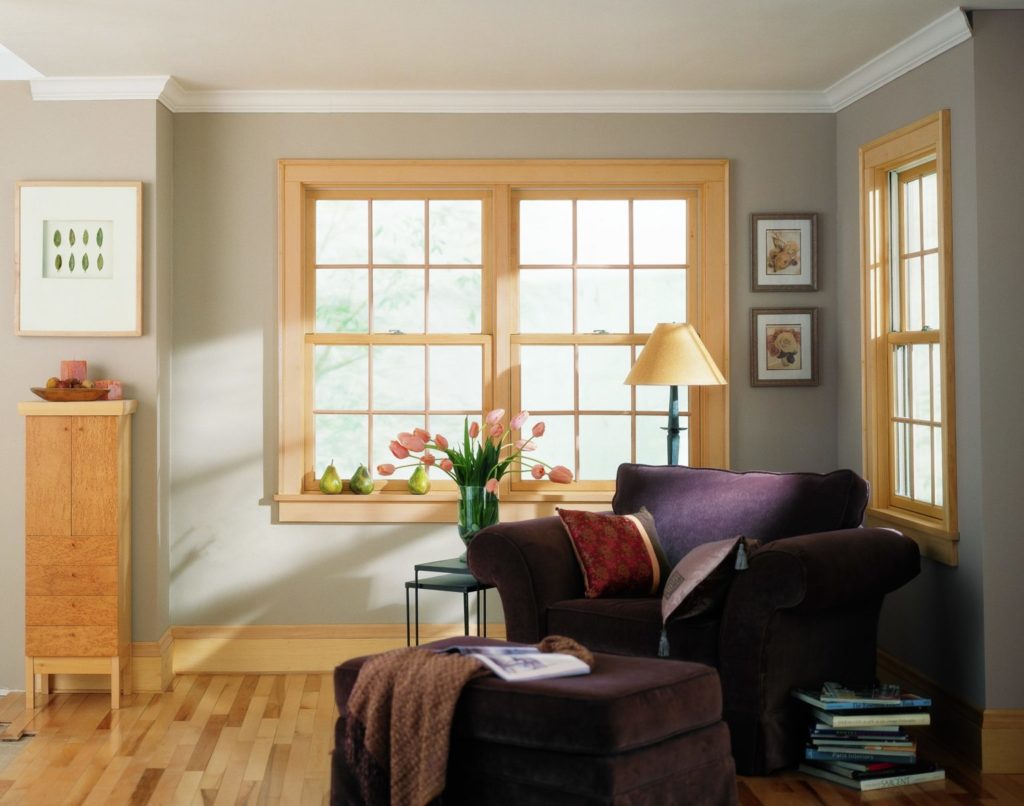
Essential Interior Design Tips for Crafting Tactile Elegance
Texture, often an overlooked element in interior design, serves as the silent communicator of comfort and character in a space. By introducing varied textures, we add depth, contrast, and a tactile dimension to interiors, evoking a sensory response that goes beyond the visual.
For those eager to experiment with textures in their homes, here are some insights:
- Blend Soft and Hard: Pair soft textiles like drapes or carpets with harder surfaces like glass tables or metal fixtures. This juxtaposition creates a balanced aesthetic.
- Natural Elements: Incorporate natural textures such as stone, wood, or bamboo. These materials not only add an organic touch but also introduce an element of timelessness to interiors.
- Pattern Play: Patterns, whether on wallpapers, upholstery, or tiles, can introduce texture visually. Geometric patterns might lend a contemporary vibe, while floral or paisley patterns could evoke a more classic feel.
- Accessorise Thoughtfully: Items like decorative bowls, vases, or even coffee table books can add texture. Consider materials like ceramics, metals, or paper to infuse diversity into your decor.
Mastering the art of texture in interior design is about layering. It’s the intricate dance of materials, fabrics, and finishes that come together to create a cohesive and inviting environment, beckoning inhabitants to touch, feel, and experience the space fully.
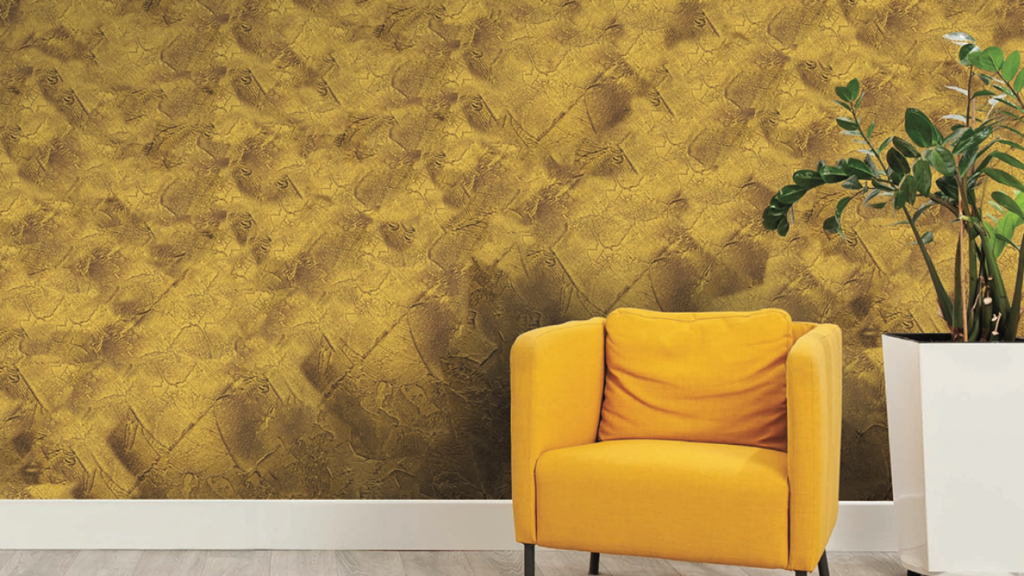
Trendy Touches: Accessorising for a Modern Home Facelift
In the dynamic world of interior designing, accessories serve as the finishing touches that breathe life and personality into a space. Much like jewellery complements an outfit, the right decor items can elevate a room from mundane to mesmerising. These small, often overlooked elements have the power to reflect personal tastes, evoke memories, and tie together various design aspects of a room.
While furniture and large fixtures often remain constant over the years, accessories can be frequently updated to keep pace with evolving design trends. This makes them a cost-effective and flexible tool for those looking to refresh their interiors without a complete overhaul.
For homeowners keen on infusing a touch of modernity into their spaces, here are some pointers:
- Statement Art Pieces: Whether it’s a contemporary painting, a sculptural piece, or even a digital art frame, art can serve as a conversation starter and a reflection of personal tastes.
- Decorative Cushions and Throws: Swapping out cushion covers or introducing vibrant throws can instantly change the vibe of a room.
- Vases and Bowls: Opt for designs with unique shapes, materials, or colours. These not only house flowers or fruits but also stand out as decorative pieces in their own right.
- Candles and Fragrances: Scented candles or diffusers not only add a pleasant aroma but can also serve as decorative elements, especially when housed in stylish holders or jars.
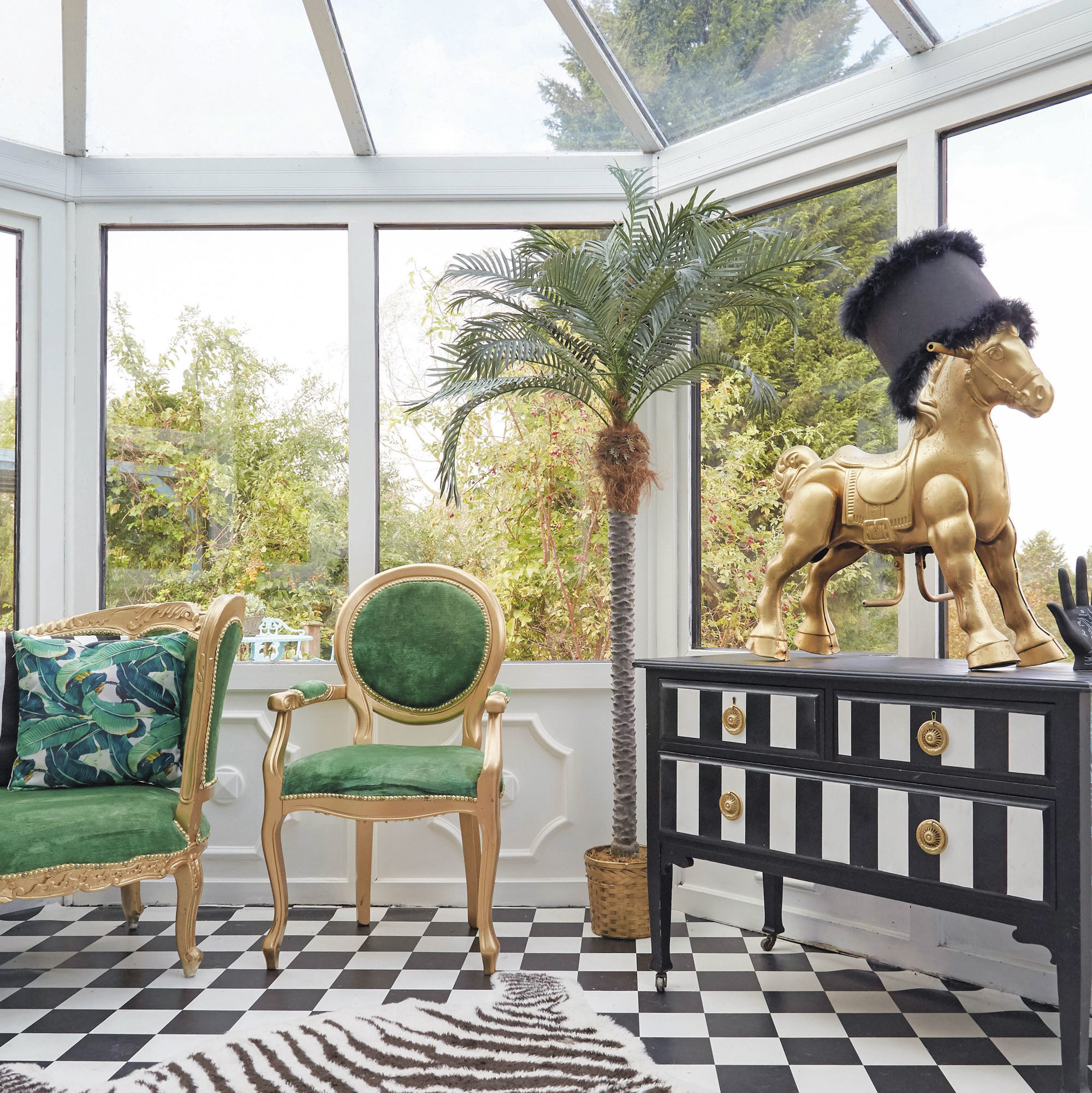
Interior Design Tips for Furniture Rearrangements
A room’s layout significantly influences its ambience and functionality. Sometimes, the key to breathing new life into a space isn’t about adding or subtracting elements but merely rearranging what already exists. Shifting furniture, even subtly, can redefine a room’s purpose, improve flow, and offer fresh visual appeal.
- Zone Creation: Especially in open-plan homes, using furniture to demarcate different zones – like a reading nook or a dining area – can add structure and purpose to vast spaces.
- Focal Point Identification: Every room should have a focal point, be it a fireplace, a piece of art, or a large window. Arrange furniture to complement and highlight this feature.
- Traffic Flow Consideration: Ensure that pathways are clear and that furniture doesn’t obstruct movement. This not only improves safety but also creates a sense of openness.
- Experimentation: There’s no harm in trying multiple arrangements to see which resonates most. Sometimes, unconventional layouts can yield surprisingly positive results.
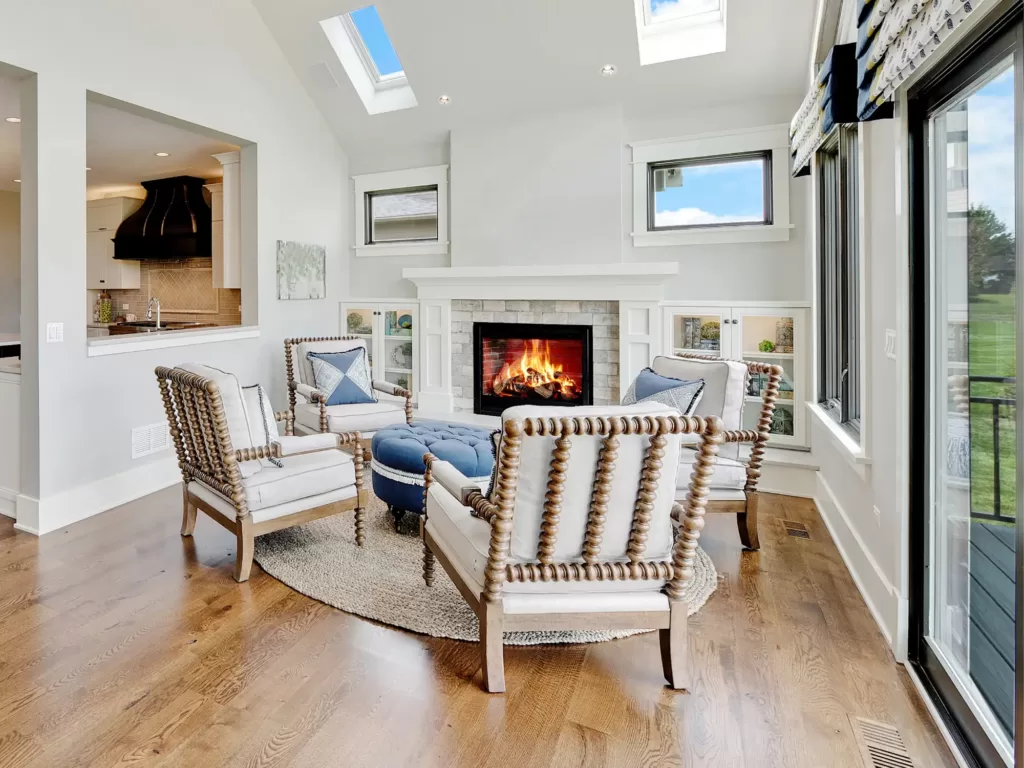
Green & Serene: Bringing Nature Indoors for a Calm Oasis
Nature has a timeless allure, offering tranquillity, beauty, and a sense of grounding. In interior design, incorporating greenery has become more than just a trend; it’s a nod to well-being, sustainability, and a harmonious connection with the environment.
Indoor plants not only enhance aesthetics but also offer a myriad of benefits. They purify the air by absorbing pollutants, increase humidity, reduce stress, and even boost productivity and creativity. With urban living often distancing us from nature, indoor plants serve as a bridge, reminding us of the world’s natural wonders.
For homeowners keen on creating a green haven, here are some insights:
- Choose According to Light: Different plants have varying light requirements. While succulents and snake plants thrive in indirect light, ferns and palms might need brighter spots.
- Think Beyond Pots: Hanging planters, wall-mounted pots, or even vertical gardens can be innovative ways to display greenery, especially in homes with space constraints.
- Vary Heights and Sizes: A mix of tall plants, tabletop greenery, and trailing vines can add depth and dynamism to interiors.
- Maintenance Matters: While some plants require minimal care, others might need regular watering, pruning, or specific conditions. Choose plants that align with your lifestyle and commitment level.
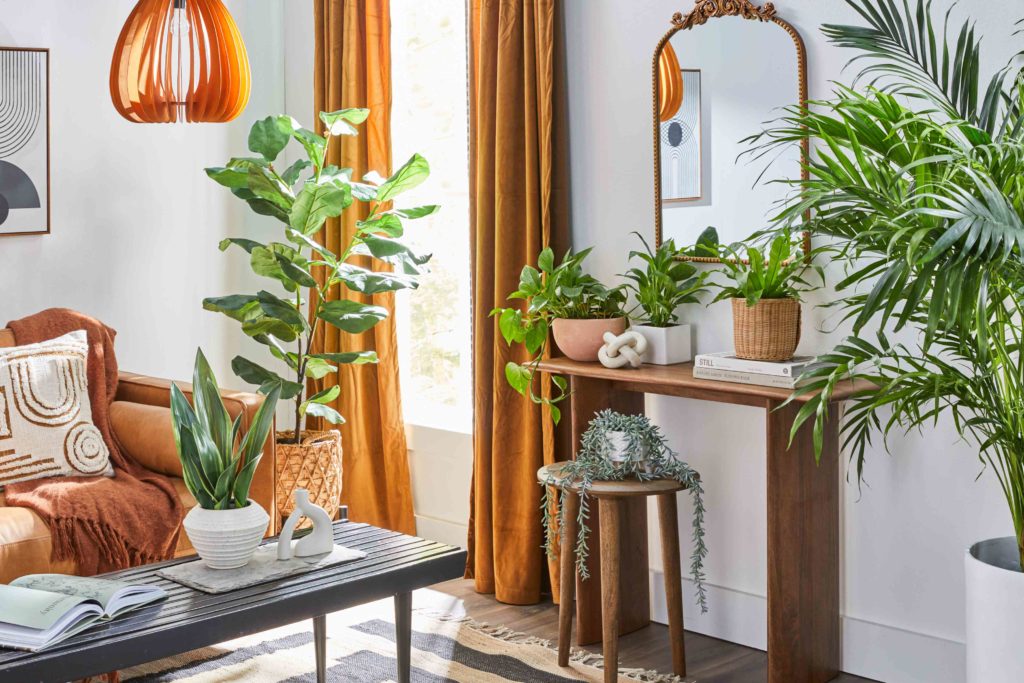
Artful Ambience: Creating Picture-Perfect Walls with Character
Art has the power to evoke emotions, tell stories, and transform spaces. Within the canvas of interior design, wall art becomes the voice of a room, expressing its personality and setting its mood. Whether you’re an avid art collector or someone who appreciates the simpler things, curating a gallery wall or selecting statement pieces can elevate your home’s ambience to new artistic heights.
The beauty of wall art is its versatility. From intricate paintings to abstract prints, family photographs to travel memorabilia, every piece tells a unique story. They reflect personal journeys, tastes, and experiences, making homes genuinely individualistic.
For those looking to curate an artful home, here are some guidelines:
- Balance Scale with Space: While a large painting can become a room’s focal point, smaller artworks can be grouped together to create a cohesive gallery wall.
- Consider Colour: Artworks can either complement a room’s existing colour palette or introduce contrasting hues for a dramatic effect.
- Frame Thoughtfully: Frames aren’t just protective casings; they enhance the artwork. Whether you choose ornate, minimalist, or frameless designs, ensure they align with the room’s overall aesthetic.
- Positioning is Key: Art should be hung at eye level, ensuring it’s easily appreciable. In dining rooms or living areas where people often sit, it might be slightly lower.
- Rotate and Refresh: The beauty of art is that it’s interchangeable. Rotate pieces between rooms or introduce new ones periodically to keep the decor feeling fresh and dynamic.
In essence, art in interior design is a dialogue between the room and its inhabitants. It’s an exploration of aesthetics, memories, and emotions. By curating and displaying art thoughtfully, homeowners can craft spaces that resonate, inspire, and captivate – turning walls into canvases of personal expression.
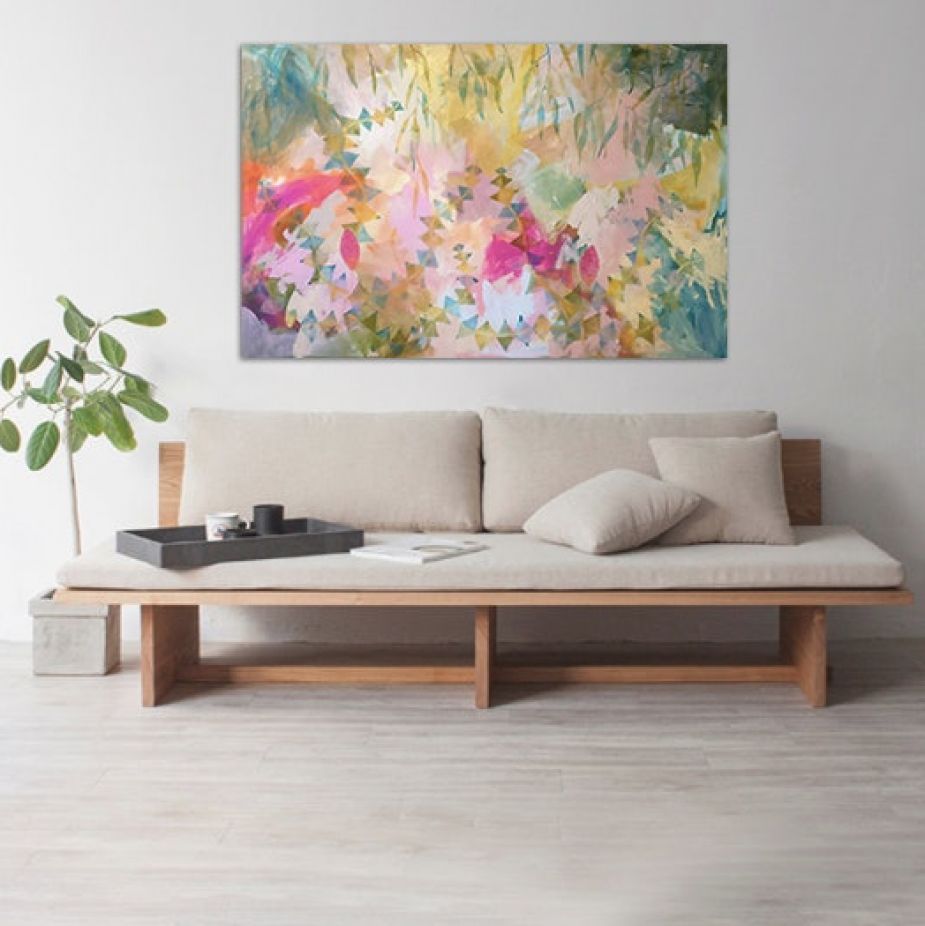
Interior Design Tips for Layering Lights
Lighting, often dubbed the ‘jewellery of the home’, plays a crucial role in shaping the ambience, functionality, and aesthetics of a space. It’s more than just illuminating a room; it’s about setting a mood, highlighting design elements, and enhancing the overall living experience. In the intricate dance of interior design, lighting choreographs a play of shadows, brightness, and colours that can transform the mundane into the mesmerising.
In today’s design landscape, lighting solutions have evolved beyond basic fixtures. They’re now integral design elements, each serving a distinct purpose, from task-oriented lights in workspaces to ambient glow in relaxation zones. For those looking to illuminate their homes with style and purpose, here are some enlightening tips:
- Layering is Essential: Combine ambient, task, and accent lighting. While ambient lights provide overall illumination, task lights focus on specific areas, and accent lights highlight design features.
- Play with Colour Temperatures: Warm lights can create a cosy, welcoming atmosphere, while cooler lights are ideal for workspaces and areas requiring concentration.
- Statement Fixtures: Consider chandeliers, pendant lights, or artistic fixtures that serve as focal points, adding character and drama to spaces.
- Dimmers for Flexibility: Installing dimmer switches allows you to adjust the brightness based on the time of day, mood, or activity, offering versatile lighting solutions.
- Incorporate Natural Light: Whenever possible, maximise natural light with strategic window placements, reflective surfaces, and sheer curtains.

Tiny Tweaks, Big Impact: Upgrading Hardware for a Chic Finish
In the grand narrative of interior design, it’s often the subtle details that leave a lasting impression. Amongst these, hardware, think knobs, handles, and fixtures, might seem inconsequential, but they hold the power to dramatically elevate a space. These small components act as the finishing touches, much like accessories to an outfit, enhancing the overall look and feel of furniture and cabinetry.
Over time, hardware can become dated, worn out, or simply out of sync with evolving design preferences. The beauty lies in the ease with which they can be updated, offering a quick and cost-effective facelift to interiors.
- Material Matters: From sleek stainless steel to rustic brass, the choice of material can set the tone. Consider the room’s existing decor and select hardware that complements or contrasts tastefully.
- Shape and Size: While elongated handles might suit contemporary kitchens, ornate knobs could be perfect for vintage dressers. It’s essential to choose designs proportionate to the furniture or cabinetry they’re affixed to.
- Consistency vs. Eclecticism: While maintaining uniform hardware throughout a room or home provides cohesion, mixing and matching designs can lend an eclectic, personalised touch.
- Installation Ease: Most hardware upgrades are DIY-friendly. However, ensure that new pieces align with existing holes or fittings. If not, be prepared for minor adjustments or drilling.
- Maintenance Perspective: Some materials, like copper or brass, may tarnish over time. If you’re looking for longevity with minimal upkeep, opt for finishes that resist wear and tear.
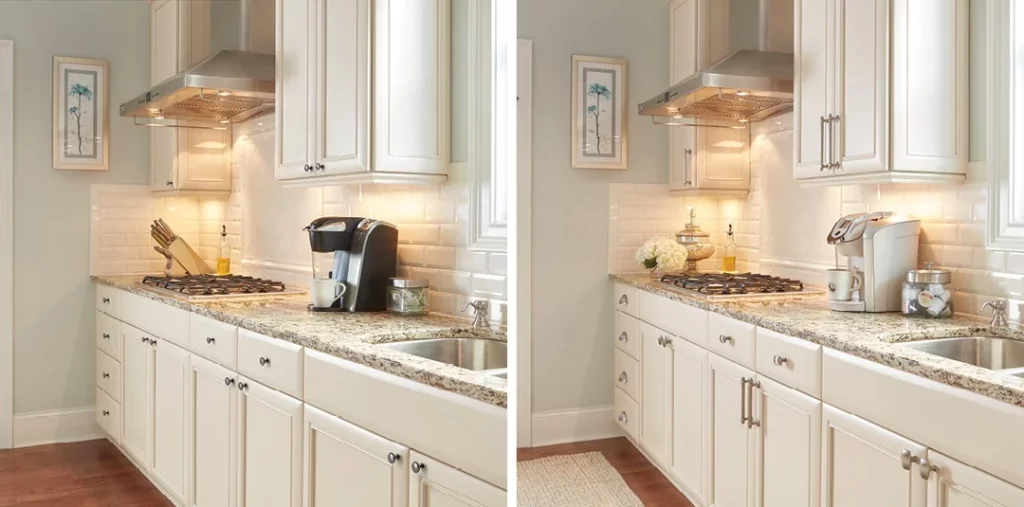
Interior Design Tips for Bold and Beautiful Statements in Decor
At the heart of every well-designed room lies a focal point, an element that draws the eye and anchors the space. In the world of interior design, centrepieces serve this pivotal role, offering both visual appeal and a conversation starter. Whether it’s a grand piece of art, an intricate light fixture, or a uniquely crafted piece of furniture, centrepieces breathe life and character into a room, making them unforgettable.
Choosing the right centrepiece isn’t just about aesthetics; it’s about understanding the room’s dynamics, its inhabitants, and the emotions one wishes to evoke. A well-selected centrepiece can tell a story, reflect personal tastes, and set the tone for the entire space.
For homeowners looking to make a statement, here are some guiding principles:
- Size and Scale: A centrepiece should be proportionate to the room. In spacious areas, larger items can shine without overwhelming, while smaller rooms might benefit from more delicate, yet impactful pieces.
- Positioning: Place the centrepiece where it naturally draws the eye, such as the centre of a dining table, above a fireplace, or in the primary seating area of a living room.
- Harmony with Decor: While a centrepiece should stand out, it shouldn’t clash. Ensure it harmonises with the room’s colour palette, style, and other design elements.
- Functionality: Some centrepieces, like a decorative coffee table or a chandelier, serve a dual purpose. They’re not only visually appealing but also functional.
- Personal Touch: Personal artefacts, heirlooms, or items with sentimental value can serve as unique centrepieces, adding a layer of personal history and narrative to the decor.
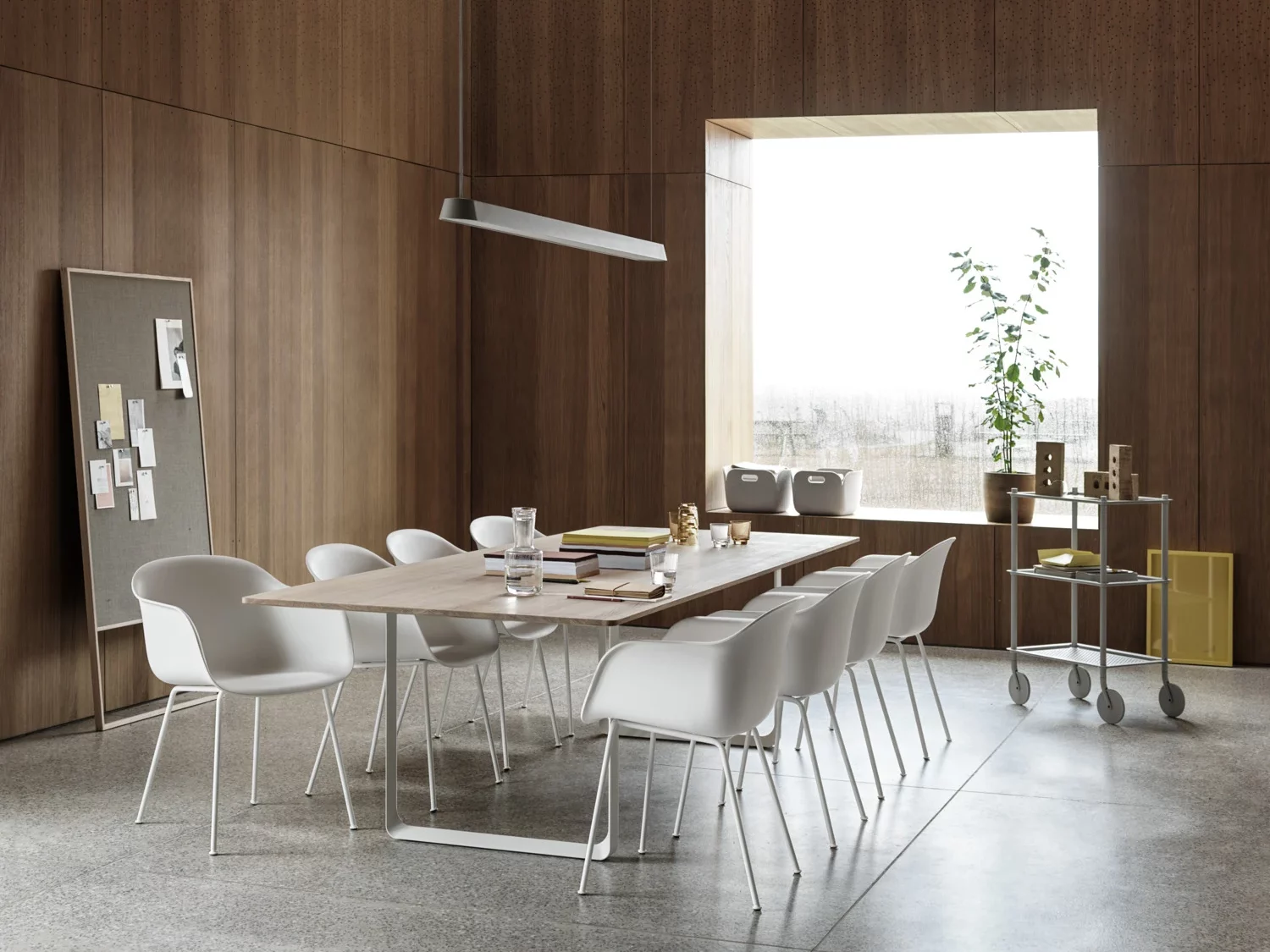
Interior Design Tips for Modern Floor Decor
Rugs, with their rich textures, patterns, and colours, are more than just functional floor coverings in the domain of interior design. They’re powerful tools that can define spaces, add warmth, and infuse rooms with personality and style. Whether it’s a plush Moroccan rug in a cosy living room or a sleek, modern design in a minimalist office, the right rug can transform a space, setting the tone and creating a sense of cohesion.
Layering rugs, a trend that has gained traction in recent years, adds an extra dimension to interiors. It’s about juxtaposing different textures, sizes, and patterns to craft a visually intriguing and tactilely pleasing floor setting. For those intrigued by the art of rug layering, here are some pointers:
- Start with a Neutral Base: Begin with a larger, neutral-toned rug as the base. This provides a canvas upon which bolder, smaller rugs can be layered.
- Play with Patterns: Don’t shy away from mixing patterns. A geometric rug can beautifully complement a floral design when chosen in harmonious colours.
- Vary Textures: Combine different rug materials for a tactile experience. Think a soft, shaggy rug atop a flat weave or a silky rug layered over jute.
- Define Spaces: In open-plan homes, layered rugs can demarcate spaces, distinguishing a reading nook from a dining area or a lounge space.
- Mind the Edges: Ensure that the top rug doesn’t cover the base rug entirely. Showing some of the base rug’s edges creates a sense of depth.
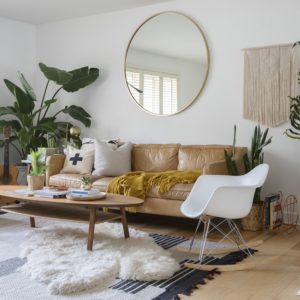
Interior Design Tips for a Balanced Aesthetic
In a world where design trends come and go, there’s something inherently enchanting about vintage pieces. They carry a history, a story, and an old-world charm that’s hard to replicate. However, in contemporary homes, striking the right balance between vintage and modern can be a delightful design challenge. The magic lies in creating a seamless blend, where each era complements the other.
For those eager to weave a tapestry of time in their homes, consider the following:
- Statement Vintage Pieces: Whether it’s an ornate mirror, a classic chandelier, or a mid-century table, let select vintage pieces become the room’s focal points.
- Modern Comforts: While vintage items bring character, modern pieces ensure comfort and functionality. Think sleek sofas, contemporary lighting, or minimalist storage solutions.
- Harmonious Palettes: Use colour to bridge the gap between eras. Neutral tones or complementary colour schemes can create a cohesive look.
- Mix & Match Textures: Blend the rich textures of vintage fabrics with the smooth finishes of modern decor for tactile depth.
By thoughtfully integrating vintage charm with modern design principles, spaces can resonate with a timeless appeal, celebrating the best of both worlds.
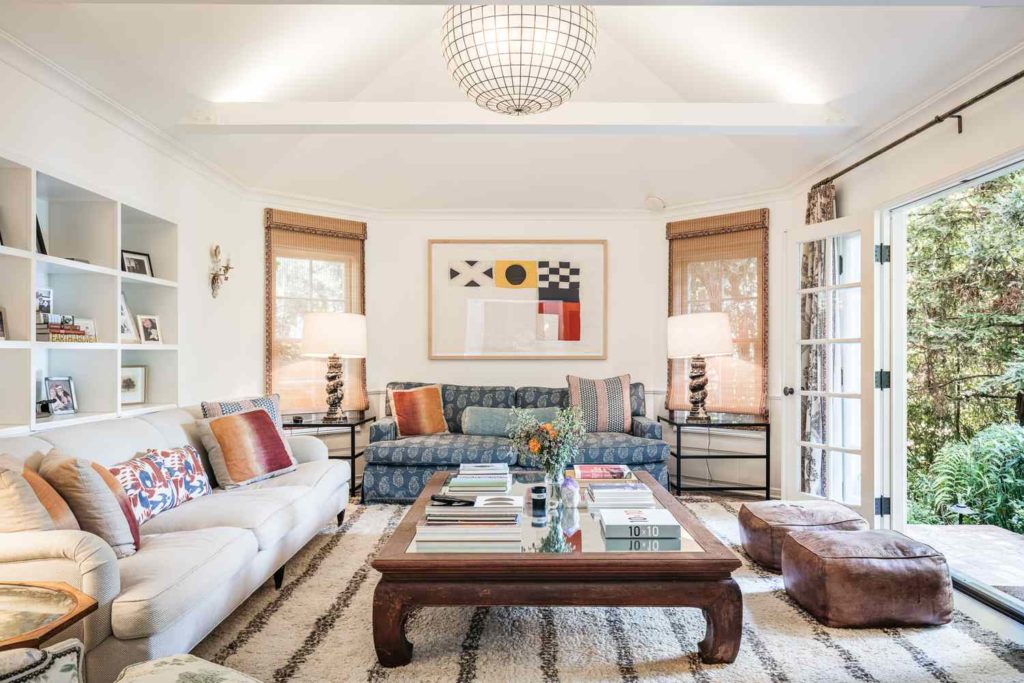
Essential Interior Design Tips for Tailored Spaces
A home is more than just a dwelling; it’s a reflection of those who inhabit it. Beyond design trends and aesthetics, personalising spaces ensures that homes tell unique stories. These are spaces that echo individual journeys, tastes, and memories.
To craft interiors that mirror one’s essence, consider:
- Personal Artefacts: Display items with sentimental value, be it family heirlooms, travel souvenirs, or handcrafted pieces.
- Customised Furniture: Invest in furniture tailored to specific needs or preferences, ensuring both comfort and style.
- Wall Galleries: Dedicate walls to personal photographs, art collections, or memorabilia that narrate personal stories.
- DIY Elements: Incorporate do-it-yourself projects or crafts, infusing spaces with a touch of personal creativity.
In the vast landscape of interior design, personalised spaces stand out, offering warmth, authenticity, and a distinctive character. By weaving in personal narratives, every room becomes a chapter, making homes not just beautiful but deeply meaningful.
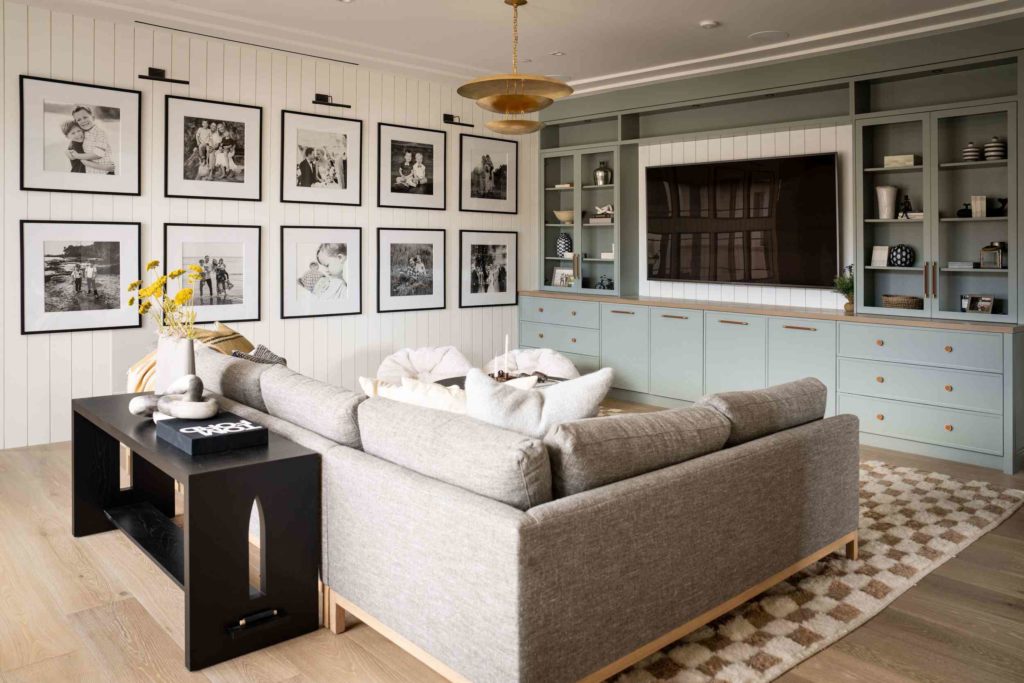
Crafting Homes with Heart: The Essence of Thoughtful Design
In the ever-evolving world of interior design, every element, from the ceiling to the floor, plays a pivotal role in crafting spaces that resonate with beauty, functionality, and personal style. Through these interior design tips, we realise that revitalising a home isn’t solely about adopting the latest trends. Often, it’s the subtle tweaks, the thoughtful placements, and the artful arrangements that make the most significant impact. Whether you’re a seasoned designer seeking fresh interior design tips or a homeowner exploring modern interior design, every space, from the living room to the bedroom, holds transformative potential. By embracing these interior design tips, which honour personal tastes and celebrate design’s diverse facets, any home can become a haven of style, comfort, and character. Here’s to leveraging interior design tips to create spaces that not only mirror our essence but also inspire us every day.
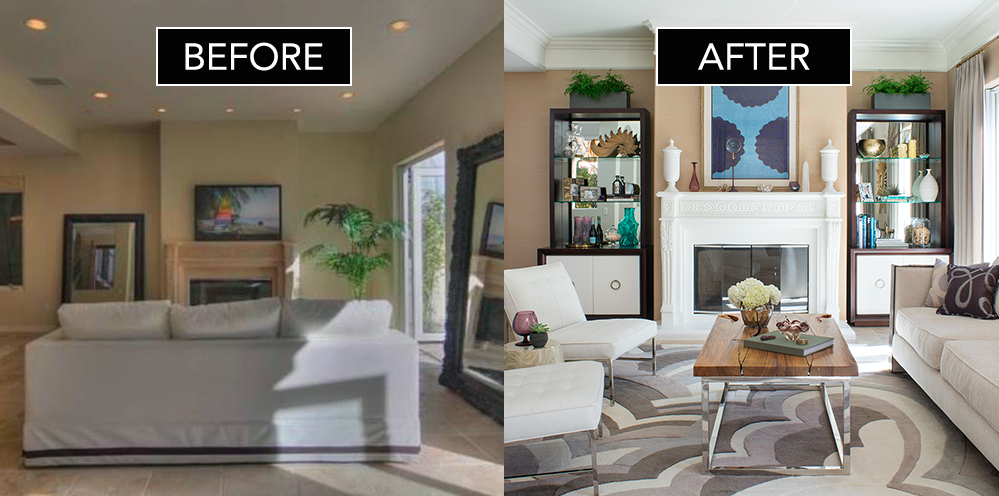
Frequently Asked Questions
To rejuvenate your interior design, consider incorporating new colour palettes, introducing different textures, or rearranging furniture. Even small tweaks like updating cushions or adding statement decor pieces can make a significant difference.
Soft lighting, warm colors, plush textiles, and personal touches like family photos or memorabilia can enhance the coziness of a home.
Repurposing current items, DIY crafts, or even rearranging furniture can revitalize a space without the need for new purchases.
Quick updates can be achieved by decluttering, adding fresh flowers, changing lighting, or simply rearranging existing furniture.
DIY crafts, repurposing existing items, incorporating plants, or simply rearranging furniture can give a fresh look on a budget.
